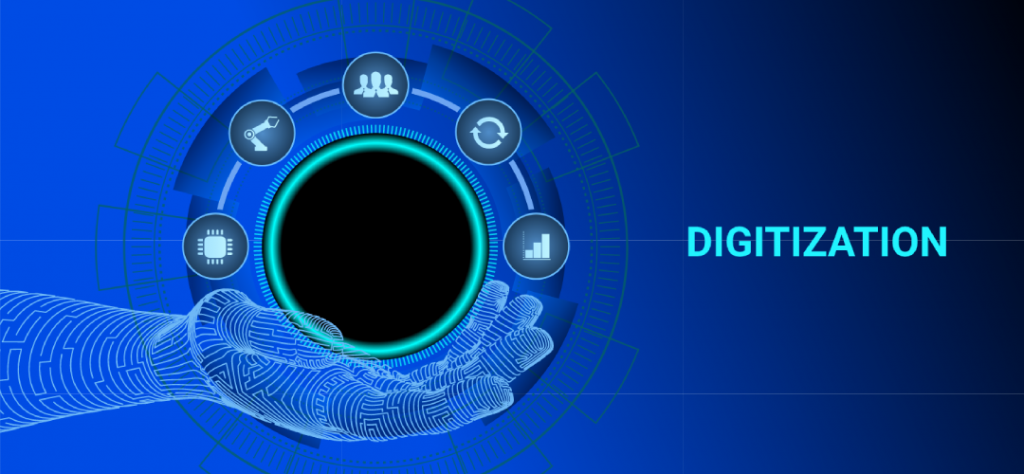Digitization

What is Digitization?
The act of digitizing involves converting information into a digital structure, rendering it computer-readable. This process culminates in a digital depiction of an object, photo, audio, document, or signal, wherein a sequence of numbers represent specific points or samples from the original material.
The final product, known as a digital representation, can be referred to as a digital image for a physical object or a digital format for signals.
Understanding Digitization
In contemporary practice, data that has been digitized is usually represented as binary numbers, making it more feasible for computers to process. Digitization broadly means converting analog sources into numerical formats, and it can employ various numbering systems. This process is vital because it allows for efficient communication of diverse types of information, empowering seamless integration across different data types. Despite the inherent stability of analog data, digital formats offer superior sharing capabilities and, theoretically, can be transferred indefinitely without quality degradation, provided they are moved to stable formats. This potential has spurred widespread digitization initiatives focused on enhancing accessibility, alongside the rapid growth of careers in digital preservation.
Read related articles:
« Back to Glossary IndexDisclaimer
In line with the Trust Project guidelines Keep in mind that the content on this page should not be taken as legal, tax, investment, or financial advice. It is crucial to only invest what you can afford to lose, and we recommend seeking independent financial counsel if you have uncertainties. For more information, please refer to the applicable terms and conditions as well as the support resources provided by the issuer or advertiser. MetaversePost strives for accurate and unbiased reporting, but market conditions can change unexpectedly.







